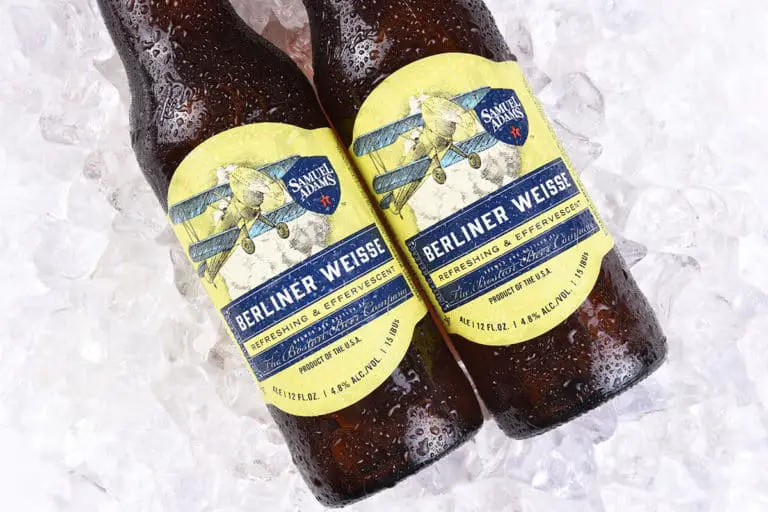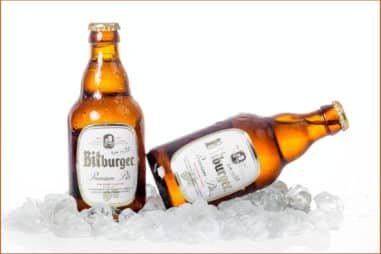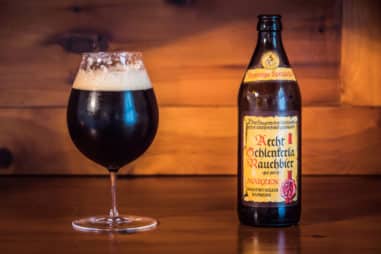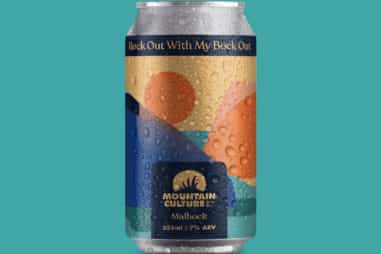Berliner Weisse is another one of the beers driven close to extinction by the top beer classes. It is nothing to worry about now as brewers and beer enthusiasts have renewed interest.
With the advent of kettle souring, homebrewing this beer has never been easier. Come and delve into the world of Berliner Weisse.
What Does Berliner Weisse Mean?
The color white represents the word “Weisse,” while Berliner refers to Berlin in Germany. It looks like a straight translation but it can get really confusing to most folks.
The word “Weisse” in the beer’s name feels like it refers to its wheat beer nature. Some associate the “white” with the lightness of the beer compared to darker wheat beers.
How Do You Pronounce Berliner Weisse?
Copying German accents is relatively easy, so “Bear-leen-er Vice-uh” should be a walk in the park for you. But if you still have trouble, try this simple rule of thumb: emphasize “R” sounds, and convert “Ws” to “Vs.”
Where Do You Drink Berliner Weisse?
You should drink your Berliner Weisse in a goblet or chalice. You could even try any style of glass with wide mouths.
Widemouthed glass designs target your bitterness receptors. You could reckon that the glass selection improves the flavor of hops in your beer.
Historically, this beer was drunk from a three-liter glass tub. Eventually, the container was downsized to the current preference.
How Is Berliner Weisse Made?
Start off by combining wheat malt and Pilsner malt, and then mash them together. Sprinkle your Lactobacillus in the mash. The wort is lightly boiled, but traditionally not needed. And finally, pitch your yeast and watch them work.
If you opt for the traditional method, you should do a decoction mash. If you love aging your beer, you can try blending beers.
What Makes a Beer a Berliner Weisse?
Sourness defines the Berliner Weisse beer. And specific bacteria are prerequisites for the lactic acid nature of the beer.
The microflora that makes the signature taste of this beer are Lactobacillus delbrukii and Brettanomyces.
What Kind of Beer Is Berliner Weisse?
Berliner Weisse is another member of the Sour Wheat beer family. It dates all the way to 16th and 17th century Germany. It is a wheaty and sour experience along with the likes of Gose.
Is Berliner Weisse a Wheat Beer?
One of the regional variations of Wheat beer in Germany is Berliner Weisse. It has the cloudiness property of the wheat and yeast combination. And most of all, it has a special twist of sour, hence its participation in the sour wheat beer class.
Is Berliner Weisse an IPA?
If you like your beer hoppy and bitter, Berliner Weisse is a different sensation. This beer beats more on your sour taste buds. It does not have the same level of alcohol either.
Is Berliner Weisse an Ale or a Lager?
One of the reasons Berliner Weisse is slowly disappearing is because it is not a Lager. The fame and demand for Lager overshadow Berliner Weisse. Only a minority of breweries in Germany remain.
What Does Berliner Weisse Taste Like?
Taste the notable and potentially dominating lactic sourness but not vinegary. Do not forget the complement of bready flavors with a trace of hop bitterness, if any. If your brew has Brettanomyces, you might detect fruitiness from the esters.
In your mouth, it will feel light and leave a champagne-like impression. And some smooth character from the yeast and wheat.
Is a Berliner Weisse a Sour Beer?
Without the sourness, Berliner Weisse would be another wheat beer. It does not have a screaming sourness of Lambics. It Berliner Weisse is on the milder side of the Sour spectrum.
This beer is great for those who want to try Sours but do not want to go all-out head-bangingly sour.
What Makes a Berliner Weisse Sour?
Cultures of Lactobacillus bacteria are the leading souring agent of Berliner Weisse. Partner this with some top-fermenting yeast, and you have got a perfect combination.
What Is the Difference Between a Sour and a Berliner Weisse?
Wild microorganisms and extended fermentation periods are typical for a Sour. Berliner Weisse migrated from wild microflora to using lab-grown bacteria and yeasts. Brewers discovered that they get the same results and stuck to it.
Naturally occurring organisms take their time when working their magic in a Sour. Unlike Berliner Weisse, scientists engineered the microorganisms for max efficiency.
What Is the Difference Between a Gose and a Berliner Weisse?
Gose and Berliner Weisse’s primary difference comes from their defining ingredient. If you remove Gose beer’s combination of salt and coriander, you will get a Berliner Weisse. Well, at the very least, you will get a stripped-down version.
How Many Calories Are There in Berliner Weisse Beer?
The average amount of energy you would intake from Berliner Weisse is 90 to 110 calories. Some brewers try to market a “light” version of around 70-ish calories.
You should take care not to defeat the purpose of minding your calories. Making the mistake of drinking a ton of “light” beers can prove counterproductive.
Is Berliner Weisse Gluten Free?
Alas, a gluten-free beer Berliner Weisse is not. There are available gluten-free options, but are they really still the original? I mean, you cannot have a sour wheat beer without wheat. It is like the veggie burger argument.
If you are allergic to gluten, brewers would commonly use sorghum syrup. It works well with sour wheat beer styles because of the gentle sourness of the sorghum syrup.
How Do You Drink Berliner Weisse?
Start off by serving Berliner Weisse in your widemouthed glass of choice. Secondly, take a tentative sip to get a feel of the sourness. If the sourness intimidates you, overcome it with a drizzle of your favorite sugary syrup. Or if you want to show the beer who is boss, blend it with some Pilsner. Bottoms up!
Berliner Weisse – Red or Green
“Rot oder grün” is German for “red or green.” Vendors would ask this when you order Berliner Weisse. It refers to a choice between two traditional sweeteners. Red is for raspberry syrup and Green is for woodruff syrup.
This beer appears somewhat like colorful cocktails. Haters would say it looks like sudsy liquid soap.
How Long Does Berliner Weisse Last?
You can expect a shelf life of several years. Some anecdotes talk about a well-preserved 30-year old Berliner Weisse. But this depends on the brewing process, handling, and sanitation.
Although, you can expect that if you have a fruit-infused beer, the infusion will drop off after a few months. Some report this in one month’s time.
Are There Hops in Berliner Weisse?
The small number of hops in Berliner Weisse offers a bitterness that is mild to non-existent. The modern use of hops here is intended to give the familiar flavor profile of the beer. And, its primary role is to regulate the beer’s microorganism population.
What Hops to Use in a Berliner Weisse?
The main classes of hops used in Berliner Weisse are dry, flavoring, aroma, and noble hops. There are many sub-species of these hop classes so you can test a bunch.
This is not a hoppy beer so you should use hops in moderation.
What Yeast to Use for Berliner Weisse?
The key to fermenting Berliner Weisse is to get your hands on a German ale strain. There are many laboratories where you can buy the appropriate strain. These labs recommended what you can brew. You just look for the tag “for Berliner Weisse.”
These lab-grown yeasts are engineered children from the family of “Saccharomyces cerevisiae.” It is a top-fermenting yeast translated as “sugar fungus.”
What Is the Best Berliner Weisse?
Another winning entry in one of the world’s best Berliner Weisse is “Brauerei Lemke Berlin: Budike Weisse.”
If you are more interested in popular German brands, try “Berliner Kindl Weisse Das Original, Berliner Kindl Brauerei.” Lately, it is more commercialized so you would not consider it as a traditional brew. Nevertheless, only brewers in Berlin can claim the name, Berliner Weisse.
For a foreigner, you could try “The Referend Berliner Messe.” It is almost always listed in online ratings in the United States.
How Do You Make a Berliner Weisse at Home?
Berliner Weisse has a homebrew solution called Kettle souring. It is faster than the traditional method and is perfect for beginners.
The mashing procedure you will use here will be the infusion mash. It is easier than the traditional decoction mash. The infusion mash involves blending hot water while mashing your grains. It has one rest period at a specific temperature.
The method is as follows:
- Mash your grains for 60 minutes at 150°F (65°C).
- Sparge into your kettle.
- Pasteurize your wort by boiling it for 10 to 15 minutes.
- Chill your wort to 85°F (30°C).
- Acidify your wort with lactic acid. Target an initial pH of 4.2.
- Pitch your lactobacillus.
- Seal your kettle.
- Purge your kettle’s headspace with carbon dioxide.
- Maintain your kettle temperature at 85°F (30°C) for 12 to 36 hours.
- Measure your pH every 12 hours until you reach a pH of 3.2 to 3.6.
- Boil your wort for five minutes.
- Add your hops.
- Chill your wort to 68°F (20°C).
- Sanitize your fermenting vessels and tubes.
- Transfer your brew to your fermenter.
- Add your yeast.
- Ferment for 1 to 2 weeks. Check the final gravity every week.
- Carbonate in a keg or bottle condition.
How Do You Mash a Berliner Weisse?
If you want to learn about the traditional decoction mash, here is an outline of the steps to follow:
- Start mashing your grains in the grain bag: a portion of Pilsner and a portion of wheat.
- Continue for 60 minutes at 150°F (65°C).
- Remove three quarts of the mash. You call this mash the “decoction.” It must include around equal parts of liquids and solids.
- Add your hops of choice to the separate mash in a different pot of water.
- Boil for 15 minutes.
- Stir and skim out any foam buildup.
- Return the decoction back to the main pot.
- Continue mashing for 60 minutes. Simultaneously boil water in another vessel. This water will be for sparging.
- After mashing, sparge the water into your mash.
- Stir constantly until a temperature of 170°F (77°C) is achieved.
How Long Does It Take to Brew a Berliner Weisse?
The overall brewing process takes two to three weeks.
Its total duration is a combination of:
- Ingredient preparation
- Mashing
- Wort Production and Processing
- Fermentation
- Final conditioning
How Long to Boil Berliner Weisse?
Boiling was historically not an essential step in brewing Berliner Weisse. If you do decide to boil your brew, the recommended duration is about 5 to 15 minutes. It will stifle any future bacterial overgrowth.
The no-boil brew was reckoned to be the source of the original wild strains that infected the wort. It probably led to the discovery of the beer itself.
How Long to Ferment Berliner Weisse?
“It’s done when it’s done” is an old saying that summarizes the fermentation process. You need to always check with your measuring instruments on the final gravity of the beer every week.
Visually, the lack of bubbling in the completion of the process. Upon confirmation with your hydrometer, you can begin the final phase of brewing.







